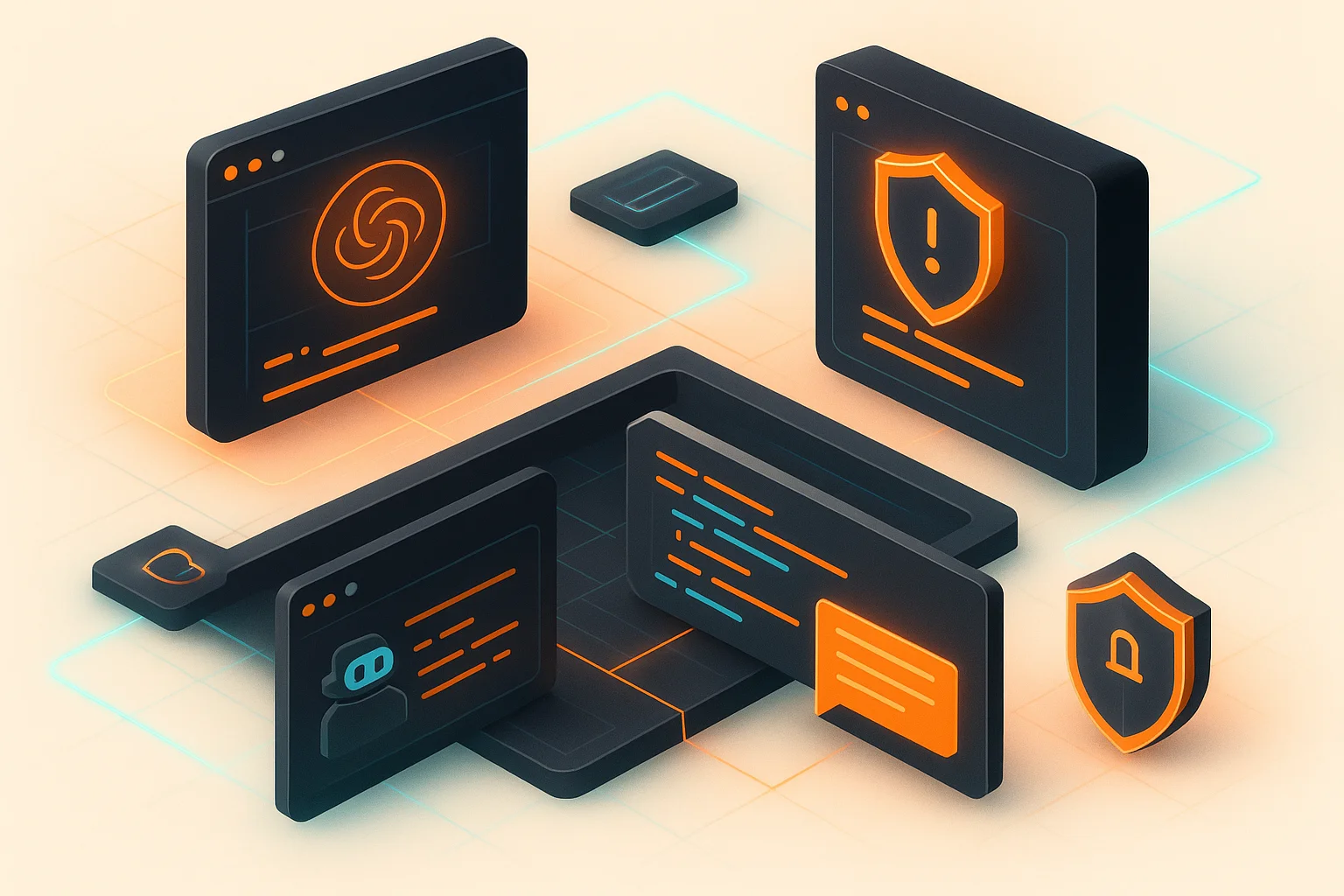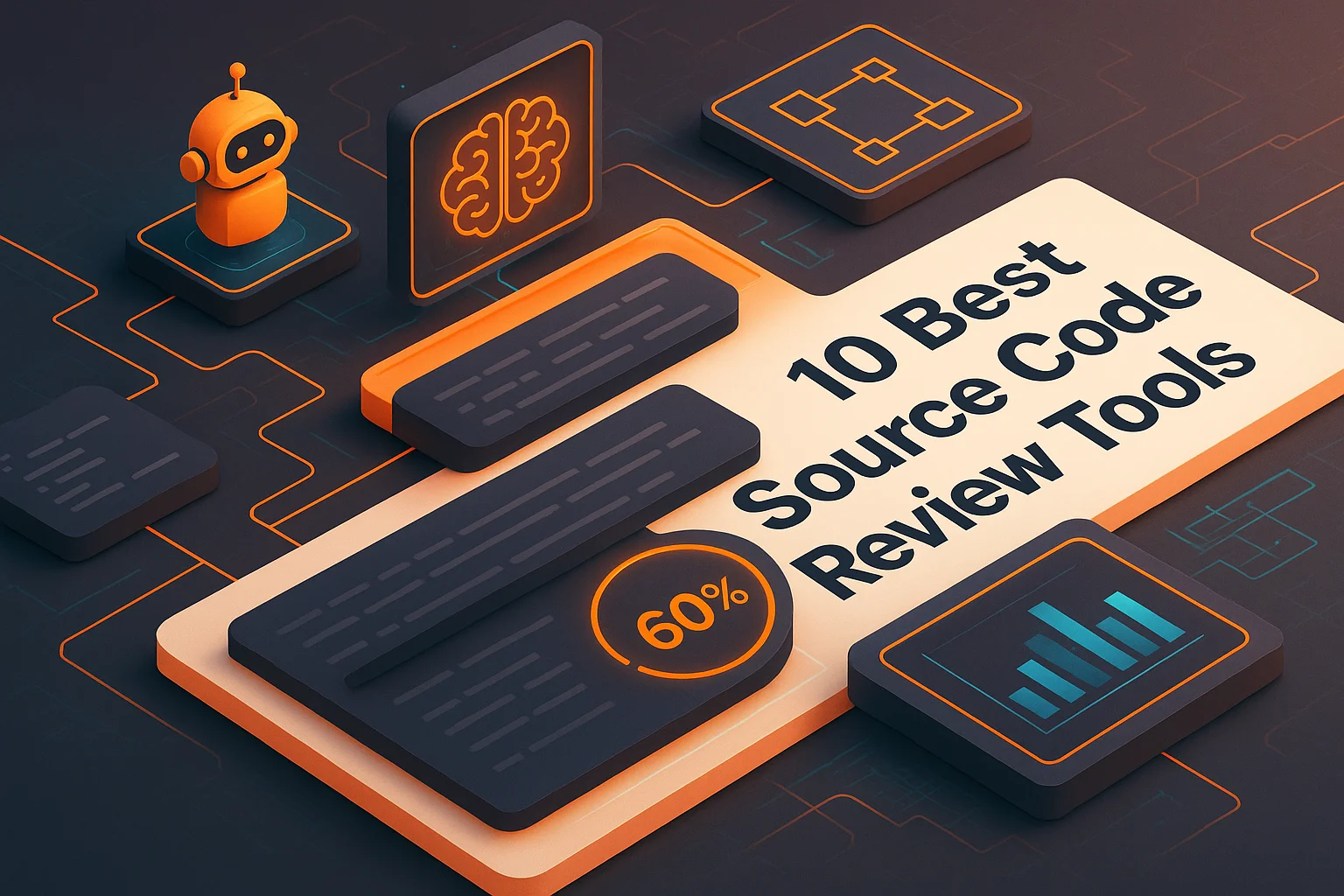Emergent Code Review Patterns for AI-Generated Code

With 97% of developers now using AI coding tools according to GitHub studies, the landscape of code review has fundamentally changed. AI-generated code from GitHub Copilot, ChatGPT, and other tools brings unique challenges that traditional review processes weren't designed to handle. This comprehensive guide covers the emerging patterns, security considerations, and best practices for reviewing AI-generated code in 2025.
Key Takeaways
- •New Security Risks: AI-generated code introduces prompt injection vulnerabilities, license compliance issues, and supply chain risks like "slopsquatting"
- •Detection Strategies: 75% of AI models can detect their own hallucinated packages, but specialized review patterns are needed for security and compliance
- •Hybrid Approach: Most effective teams combine AI's systematic analysis with human oversight for architectural decisions and business context
- •Legal Considerations: Ongoing class-action lawsuits highlight the importance of license compliance and IP protection in AI code review
The New Reality: AI-Generated Code in 2025
The code review landscape has been transformed by the rapid adoption of AI coding assistants. With GitHub Copilot integrating GPT-5 capabilities and 82% of developers using AI coding assistants daily or weekly, engineering teams are grappling with entirely new categories of issues that traditional static analysis tools weren't designed to catch.
Recent developments in 2025 have made this even more critical. GPT-5 integration in GitHub Copilot has increased suggestion accuracy to 89% (up from 73% with GPT-4.1), but this also means more AI-generated code is making it into production with less scrutiny. Security incidents like the CVE-2025-54135 vulnerability in Cursor AI and the "Skynet" malware using prompt injection techniques have highlighted the urgent need for specialized review patterns.
Critical Security Patterns for AI-Generated Code
Traditional security reviews focused on input validation and authentication flaws. AI-generated code introduces entirely new attack vectors that require updated review methodologies.
Prompt Injection Detection
OWASP's #1 AI Security Risk
OWASP has ranked prompt injection as the number one AI security risk in 2025. Unlike traditional injection attacks, prompt injections can manipulate the AI's behavior at the generation level.
Direct Prompt Injection Indicators
- • Comments containing instructions to the AI model
- • Unusual string concatenations with model directives
- • Code that attempts to "jailbreak" or override safety filters
- • Function names or variables with embedded commands
Indirect Injection Patterns
- • Data processing code that handles untrusted external content
- • API integrations without proper input sanitization
- • File parsing logic for user-generated content
- • Dynamic string building from external sources
Supply Chain "Slopsquatting" Detection
One of the most insidious new threats is "slopsquatting" - when AI models recommend non-existent libraries and packages. Studies show a 20% tendency in LLMs to hallucinate package names, creating new supply chain attack vectors.
Review Checklist for Package Dependencies
- ⚠️Verify package existence: Check that all imported packages exist in official registries (npm, PyPI, Maven Central)
- ⚠️Check package names: Look for typos or variations that might indicate hallucinated packages
- ⚠️Validate import statements: Ensure import syntax matches the actual package structure
- ⚠️Cross-reference documentation: Confirm that methods and classes actually exist in the referenced version
License Compliance and Legal Risk Patterns
The ongoing class-action lawsuit Does v. GitHub, Inc. (№4:22-cv-06823-JST) continues to shape how teams must approach AI-generated code review. Legal risks around license compliance have become a critical concern for enterprise teams.
Copyleft License Contamination
The Core Issue: AI models trained on GPL, LGPL, and other copyleft-licensed code may reproduce protected snippets without proper attribution, potentially contaminating your entire codebase with copyleft obligations.
Essential Review Steps:
- Enable duplication detection: GitHub Copilot's optional code referencing filter can detect and suppress suggestions matching public code
- Scan for license headers: Look for commented license text or copyright notices that might indicate copied code
- Check for distinctive patterns: Review code that seems unusually sophisticated or follows very specific architectural patterns
- Use license scanning tools: Tools like FOSSA can help detect copyleft-licensed files in AI-generated output
IP Indemnity Requirements
GitHub's IP indemnity for Copilot Business and Enterprise users only applies if the duplication detection filter is enabled. This creates a clear compliance requirement for enterprise review processes.
Emerging Code Quality Patterns
While AI-generated code quality has improved dramatically, specific patterns of issues have emerged that require focused review attention.
Context Misunderstanding
Common AI Context Failures
Architectural Misalignment
- • Code that follows different patterns than existing codebase
- • Inconsistent error handling approaches
- • Mismatched abstraction levels
- • Wrong framework conventions
Business Logic Errors
- • Edge cases not handled correctly
- • Incorrect assumptions about data flow
- • Missing business rule validations
- • Inappropriate default values
Performance Anti-Patterns
AI models often generate code that works but isn't optimized for production scale. Testing shows that while 89% of GPT-5 suggestions work without modification, performance optimization still requires human oversight.
- Inefficient algorithms: AI may choose O(n²) solutions when O(n log n) exists
- Excessive memory usage: Lack of optimization for memory-constrained environments
- Database query patterns: N+1 queries and missing indexes in generated SQL
- Synchronous operations: Missing async/await patterns where appropriate
Implementing AI-Aware Review Processes
Successful teams are developing hybrid approaches that leverage both AI assistance and human expertise. The goal isn't to eliminate AI-generated code but to review it effectively.
Three-Layer Review Framework
Layer 1: Automated Detection
Use AI-powered tools to catch obvious issues automatically:
- • Static analysis for security vulnerabilities
- • License scanning for compliance issues
- • Package verification for supply chain risks
- • Performance profiling for optimization opportunities
Layer 2: Pattern-Based Human Review
Human reviewers focus on AI-specific issues:
- • Context appropriateness and architectural fit
- • Business logic correctness and edge cases
- • Code style consistency with team standards
- • Integration patterns with existing systems
Layer 3: Strategic Architecture Review
Senior engineers evaluate higher-level concerns:
- • Long-term maintainability implications
- • Technical debt and refactoring needs
- • System design and scalability considerations
- • Knowledge transfer and documentation requirements
AI-Enhanced Review Tools and Workflows
Modern code review platforms are adapting to help teams manage AI-generated code more effectively. GitHub Copilot itself can be used during the review process to suggest improvements and explain unfamiliar code patterns.
GitHub Copilot for Code Reviews
GitHub Copilot can enhance the review process by clicking the Copilot icon next to files being reviewed and asking for specific improvement suggestions. This helps reviewers identify issues they might miss and provides learning opportunities for the team.
Pro tip: Use Copilot to request initial code reviews before human reviewers see the code. This can catch obvious issues early and free up human reviewers to focus on higher-level concerns.
Team Training and Adoption Strategies
Successfully implementing AI-aware code review requires team education and gradual adoption. Teams that struggle with AI-generated code often lack clear guidelines and training.
Building AI Code Review Competency
Essential Training Areas
Security Awareness
- • Prompt injection attack vectors
- • Supply chain risk identification
- • License compliance requirements
- • IP protection best practices
Quality Patterns
- • AI-generated code characteristics
- • Context misunderstanding detection
- • Performance optimization identification
- • Architecture alignment evaluation
Establishing Review Guidelines
Teams that successfully manage AI-generated code have clear, documented guidelines that address the unique challenges. These guidelines should be living documents that evolve with the technology.
- Flag AI-generated sections: Use comments or markers to indicate code that was AI-assisted
- Require additional scrutiny: AI-generated code should receive extra attention during review
- Document decision rationale: Explain why AI suggestions were accepted or rejected
- Maintain review standards: Don't lower quality bars just because code is AI-generated
Measuring Success and Continuous Improvement
As with any development process change, measuring the impact of AI-aware code review practices is essential for continuous improvement and team buy-in.
Key Metrics to Track
Security Metrics
- • Prompt injection attempts detected
- • License compliance violations caught
- • Supply chain risks identified
- • Security vulnerabilities prevented
Quality Metrics
- • Context mismatches identified
- • Performance issues caught
- • Architecture violations prevented
- • Code style inconsistencies fixed
Efficiency Metrics
- • Review cycle time changes
- • False positive rates
- • Developer satisfaction scores
- • Knowledge transfer effectiveness
The Future of AI-Aware Code Review
As AI coding tools continue to evolve, so too must our review processes. The integration of GPT-5 in GitHub Copilot and the emergence of agent-based coding systems suggest that future review processes will need to be even more sophisticated.
The legal landscape is also evolving. The ongoing litigation around GitHub Copilot may establish new precedents for AI-generated code ownership and liability. Teams should stay informed about these developments and adjust their processes accordingly.
Frequently Asked Questions
How can I tell if code was generated by AI during review?
Look for patterns like unusually perfect formatting, generic variable names, comprehensive error handling without context, or code that follows different patterns than the rest of the codebase. Many teams now require developers to mark AI-generated sections with comments. Tools like Propel can also help identify AI-generated patterns during automated review.
Should we completely avoid AI-generated code due to legal risks?
No, but you should implement proper safeguards. Enable duplication detection filters in tools like GitHub Copilot, conduct license scanning on AI-generated output, and maintain proper documentation of your review processes. The legal risks are manageable with appropriate controls and awareness.
How do prompt injection attacks actually work in AI-generated code?
Prompt injection attacks can occur when AI models process untrusted input that contains hidden instructions. This can happen through comments in code, data processing functions, or even variable names that attempt to manipulate the AI's behavior. The 2025 CVE-2025-54135 vulnerability in Cursor AI demonstrated how these attacks can lead to remote code execution.
What's "slopsquatting" and why should I care?
Slopsquatting occurs when AI models recommend non-existent packages or libraries, creating supply chain security risks. If developers try to install these hallucinated packages, attackers could register them with malicious code. Studies show a 20% tendency in LLMs to hallucinate package names, making package verification a critical part of AI code review.
How should we adapt our existing code review process for AI-generated code?
Implement a three-layer approach: automated detection for obvious issues, pattern-based human review for AI-specific problems, and strategic architecture review for high-level concerns. Train your team on AI-specific risks, establish clear guidelines for marking AI-generated code, and use tools like Propel that understand the unique patterns and issues in AI-generated code.
References and Further Reading
Key Sources
- [1] GitHub. "Survey reveals AI's impact on the developer experience." GitHub Blog, 2025.
- [2] OWASP. "LLM01:2025 Prompt Injection." OWASP GenAI Security Project, 2025.
- [3] The Hacker News. "Cursor AI Code Editor Fixed Flaw Allowing Attackers to Run Commands via Prompt Injection." August 2025.
- [4] Check Point Research. "New Malware Embeds Prompt Injection to Evade AI Detection." 2025.
- [5] DevOps.com. "AI-Generated Code Packages Can Lead to 'Slopsquatting' Threat." 2025.
- [6] Bolar, T.V. "GitHub Copilot Litigation: A Deep Dive into the Legal Battle Over AI Code Generation." Medium, 2025.
- [7] FOSSA. "5 Ways to Reduce GitHub Copilot Security and Legal Risks." FOSSA Blog, 2025.
- [8] MarkAI Code. "I Broke My Build Pipeline Testing GPT-5 vs GitHub Copilot—Here's What I Learned." 2025.
- [9] GitHub. "How to use GitHub Copilot to level up your code reviews and pull requests." GitHub Blog, 2025.
- [10] Qodo. "State of AI code quality in 2025." Qodo Research Report, 2025.
Ready to enhance your AI-powered development workflow? Propel provides specialized AI code review that understands the unique patterns and risks in AI-generated code, helping your team maintain quality and security standards while leveraging the benefits of AI coding assistants.
Transform Your Code Review Process
Experience the power of AI-driven code review with Propel. Catch more bugs, ship faster, and build better software.


